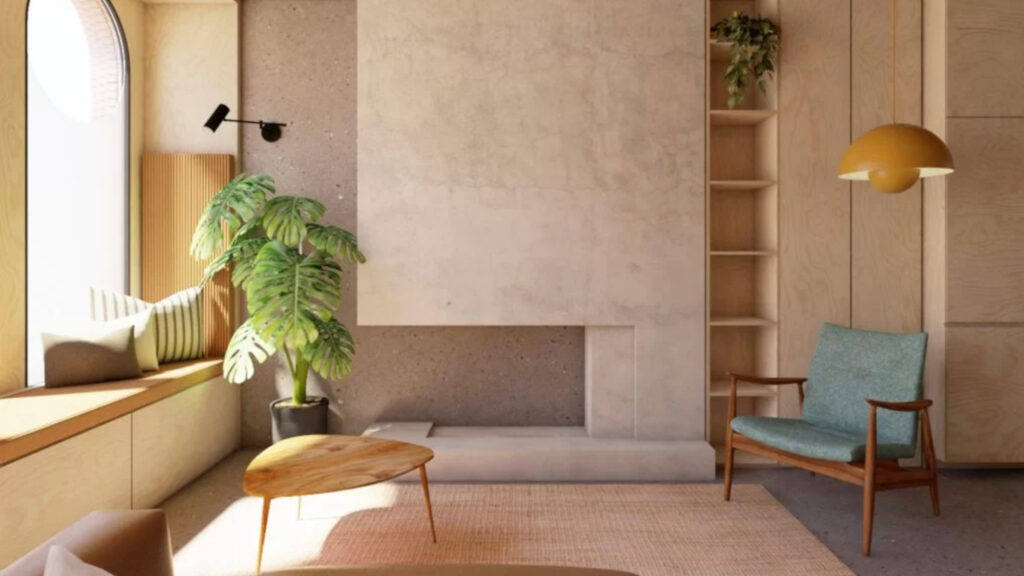When it comes to interior design and construction, wall finishing plays a crucial role in both aesthetics and functionality. From classic drywall to modern materials like PVC wall panels Canada, the choices can seem overwhelming for someone new to the subject. Whether you’re remodeling a space, designing a new build, or simply curious about what your options are, understanding the pros and cons of different wall finishes is essential.
This beginner’s guide will explore the most common interior wall finishing options, focusing on their properties, use cases, and what makes each one unique.
Drywall: The Go-To Standard
Drywall, also known as gypsum board or sheetrock, is one of the most common interior wall finishing materials. It is widely used in residential and commercial buildings for its cost-effectiveness and ease of installation.
Pros:
- Affordable and Readily Available: Drywall is a budget-friendly option that is easy to find in most hardware stores.
- Easy to Work With: It can be cut, shaped, and installed with basic tools.
- Paint-Friendly: Provides a smooth, even surface for painting and wallpapering.
Cons:
- Susceptible to Moisture: Drywall doesn’t fare well in damp environments, making it less ideal for bathrooms or basements.
- Fragility: It can be easily dented or punctured with minimal force.
Drywall is great for standard interior walls but may not be the best choice for high-moisture areas or places where durability is a top concern.
Wood Paneling: Warmth and Character
Wood paneling adds natural warmth and texture to a room, making it a popular choice for rustic and traditional interiors. Available in a variety of wood types, from pine to walnut, paneling can be stained, painted, or left natural.
Pros:
- Aesthetic Appeal: Brings a cozy, timeless look to any space.
- Durability: Wood can withstand wear and tear if properly maintained.
- Insulation Properties: Offers some level of sound and thermal insulation.
Cons:
- Cost: High-quality wood can be expensive.
- Maintenance: Susceptible to scratches and may require occasional refinishing.
- Moisture Sensitivity: Like drywall, wood is not ideal in humid or wet environments.
Wood paneling is best suited for living rooms, home offices, or areas where aesthetic warmth is a priority.
PVC Panels: The Modern Moisture-Resistant Option
Polyvinyl chloride (PVC) wall panels are gaining popularity as a modern alternative to traditional materials. These panels are especially useful in areas where moisture resistance, hygiene, and ease of maintenance are crucial.
Pros:
- Waterproof: Ideal for bathrooms, kitchens, laundry rooms, and basements.
- Low Maintenance: Easy to clean and resistant to mold, mildew, and bacteria.
- Durable: Resistant to impact and scratches.
- Quick Installation: Often designed with interlocking edges, making them faster to install than traditional drywall or tile.
Cons:
- Synthetic Look: Some might find them less visually appealing compared to wood or painted drywall.
- Environmental Concerns: Being plastic-based, they are less eco-friendly than natural materials unless recycled options are chosen.
PVC wall panels are an excellent choice for utility-focused areas where moisture and cleanliness are top concerns.
Plaster: Old-World Craftsmanship
Plaster has been used for centuries and is known for its hard, smooth finish and excellent durability. While more labor-intensive to apply, it can create a luxurious, high-end finish.
Pros:
- Durability: Once cured, plaster is incredibly tough and long-lasting.
- Acoustic Benefits: It dampens sound better than drywall.
- Customization: Can be molded and textured for a unique finish.
Cons:
- Labor-Intensive: Requires skilled labor for proper application.
- Cost: More expensive due to the material and labor involved.
- Repair Complexity: Cracks or holes are more difficult to patch than drywall.
Plaster is best used in restoration projects, high-end builds, or homes where unique textures and historic aesthetics are desired.
Tile: Functional and Stylish
Tiles are a staple in bathrooms and kitchens for their moisture resistance and aesthetic versatility. They can also be used creatively in accent walls or utility spaces.
Pros:
- Water-Resistant: Ideal for wet or humid environments.
- Easy to Clean: A great option for areas that need to stay sanitary.
- Variety: Available in countless sizes, colors, patterns, and materials.
Cons:
- Cost: Can be pricey depending on material and design.
- Installation Time: Labor-intensive and time-consuming.
- Cold Surface: May feel cold to the touch, which can be a drawback in living areas.
Tile is excellent for spaces where functionality and style must go hand in hand, such as bathrooms, kitchens, and laundry rooms.
Factors to Consider When Choosing a Wall Finish
Choosing the right wall finish isn’t just about aesthetics. Here are some important considerations:
- Environment: Is the space prone to moisture or temperature fluctuations?
- Functionality: Will the wall need to resist wear, or is it purely decorative?
- Maintenance: Are you prepared for regular upkeep or do you prefer a low-maintenance option?
- Budget: What materials and installation methods fit within your financial plan?
- Design Preferences: Do you prefer sleek modern surfaces, natural textures, or classic looks?
Thinking through these questions can help you narrow down the best finish for each room or project.
Combining Materials for Best Results
In many cases, using a mix of wall finishes can yield the best results. For example:
- Use drywall in living spaces for cost-effective simplicity.
- Apply PVC panels in bathrooms and basements for moisture protection.
- Install tile in backsplashes or around sinks for style and function.
- Introduce wood paneling in feature walls or reading nooks for warmth.
Combining materials allows you to play with texture and function, creating a dynamic and cohesive design throughout your space.
Final Thoughts
Wall finishing is more than just a visual choice—it affects the durability, comfort, and performance of your interior spaces. Whether you’re leaning toward timeless wood, modern PVC wall panels in Canada, or a custom plaster finish, the best wall finish depends on your specific needs and goals.
For homeowners and builders alike, understanding the characteristics and limitations of each material is the first step toward making smart, lasting design decisions. With the right choice, your walls can offer both beauty and functionality for years to come.





